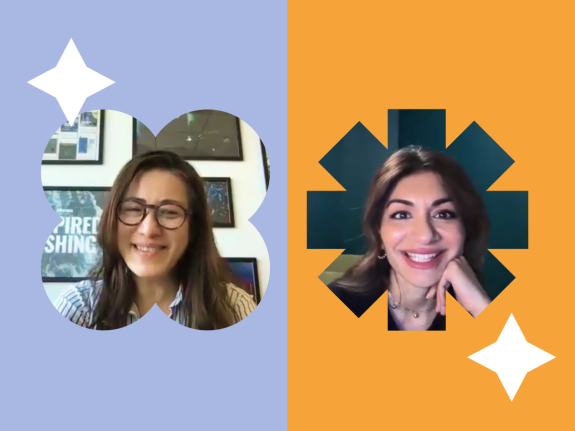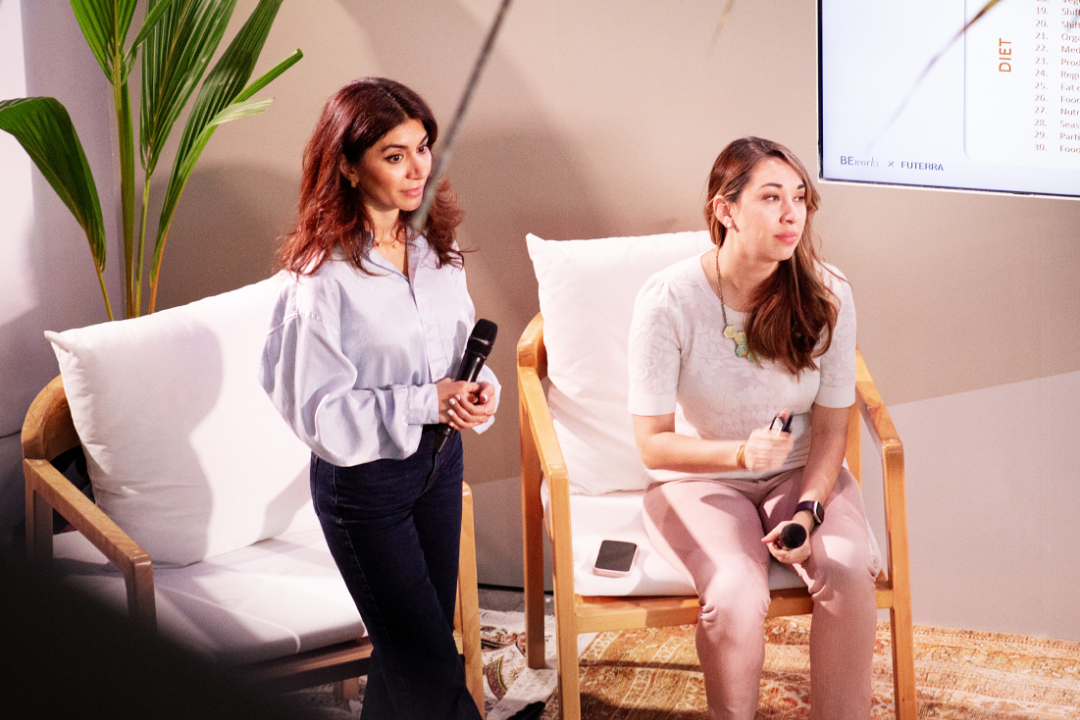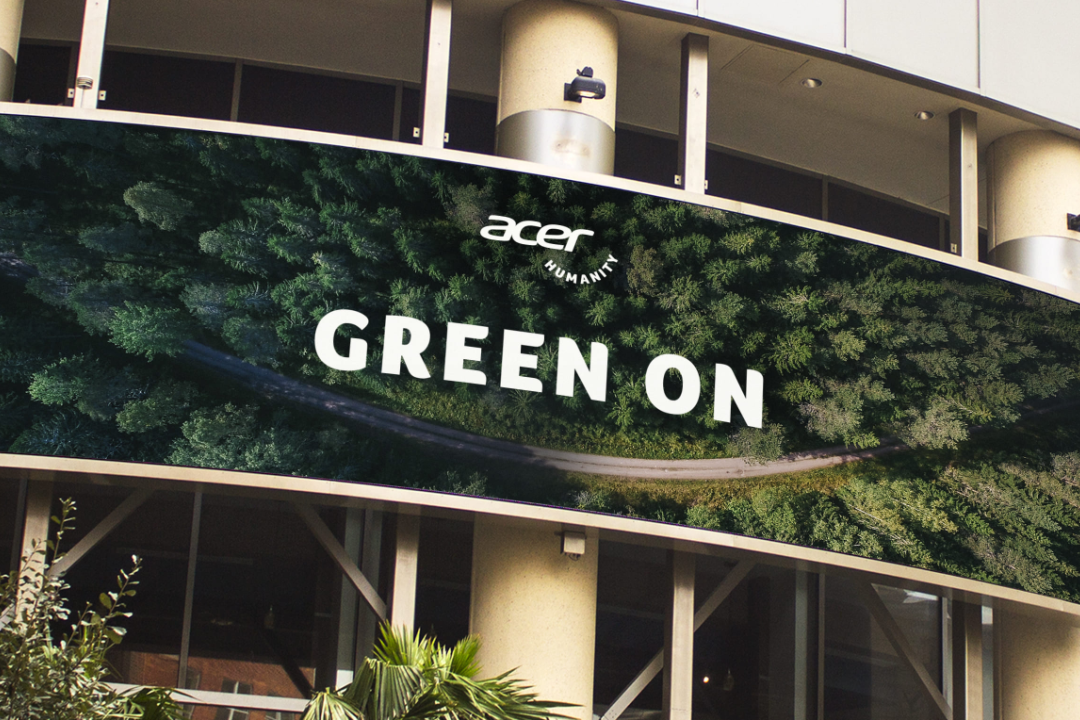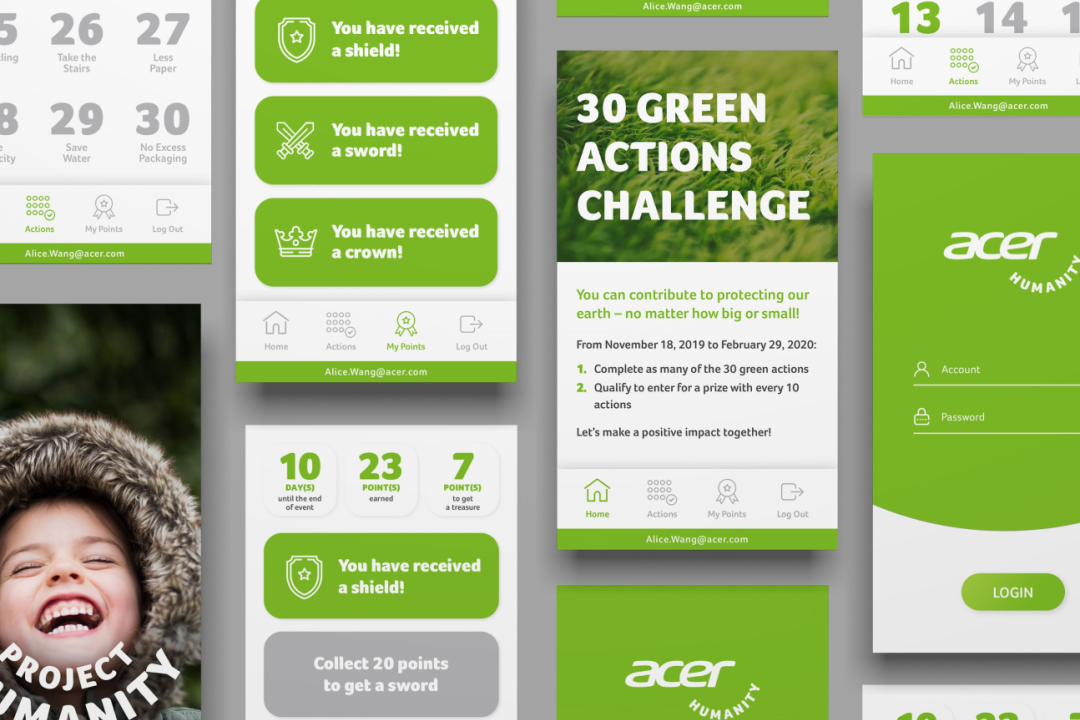
Pushing New Thinking
RedPeak and BEworks CEOs on creative mindsets, humanizing AI, and working together.

Screenshots from the Zoom call
Red Peak CEO Silvia Yu and BEworks CEO Wardah Malik first connected in January 2023 to discuss human behavior and AI. Even though it would be nearly a year before the two CEOs met in person (in Dubai, for COP28), they very quickly clicked, becoming fast friends and confidants who act as sounding boards for each other. “We had no shortage of ideas that we could apply our expertise to,” says Malik.
Yu (based in Taiwan) and Malik (based in Canada) recently met on Zoom and let us listen in, running through a gamut of topics including humanizing AI, creativity, and the work that excites them.
The following conversation has been edited for length and clarity.
SILVIA I think we are drawn together because we’re curious about new questions, and we’re eager to find answers together.
WARDAH You just touched on the curiosity angle, but learning that you are a former researcher has made me feel like we’re speaking the same language in many ways. We [at BEworks] observe this curiosity in the world, but we have a more systematic approach to trying to study it and really get to the core of what the answers are.
SILVIA My college major was sociology and I started my career as a researcher at Philips, going around the world and understanding consumer behavior. That’s why I was so excited when I saw that BEworks had joined the kyu Collective because we could work with people who specialized in observing people’s behavior.
Observing people’s behavior is so interesting — and it’s even more interesting to connect that with real impact. It’s like how you were working on climate change research; we connected you to some of our clients and then worked on your research and the climate lab together for them. It’s really amazing how we connect the dots.


Silvia Yu of RedPeak and Wardah Malik of BEworks
Activating Creative Mindsets
WARDAH At COP, we were there at kyu House, and your team was there launching Acer House. We had an opportunity to meet in person for the first time, even though it didn’t feel like the first time.
You touched on our climate change research, the climate mindset work. Our research is about uncovering the kind of climate mindset orientation employees need to have in order to feel motivated to address the climate challenges that lay ahead of us. Organizations are really focusing on sustainability more and more and what that looks like for the products that they create. Employees need to believe that they can make a difference and that this shift is going to be worthwhile in an era where more people are so demotivated.
One of the biggest findings was that there’s something about having a creative mindset that allows you to have a much longer future orientation, to be more optimistic, to imagine a multitude of possibilities of what could be. We’ve got these building blocks of the climate solutionist, essentially. Curiously, we found that you didn’t have to be a traditional creative, you didn’t have to be working in the art department or be a designer, you just had to be solution- and creativity-minded. It’s a way of thinking.
SILVIA Everybody has some creativity that can, in a way, inspire some change. In your research, you not only talk about organization, optimism, and past mistakes, you tackle different cultures like Japan versus England versus America. We can start to see there are probably other variables changing people’s mindset towards climate.
I think in our next project together, we need to ask, how do we embrace this research with other countries together? It doesn’t seem short term, because it’s not research that you can invest some dollars immediately in. It’s more of a long-term project to find out more about people’s mindsets and find a real solution to bridge the gap between the vision and action towards climate change.
WARDAH It’s an approach to measure how people think, not just what they do. This can change the way that you are hiring individuals based on some of the attributes of their mindset. If you are on this shift to create a more sustainably-minded technology company, in the case of Acer, that means that you might want to reevaluate who’s coming in through your doors, or what that mix of that creativity-oriented mindset is within your organization, and how you can bolster more of that.
Some of this early work came from understanding where the solutions for climate change are going to come from. The stereotypes are that they will come from scientific organizations, technologists, engineers, but where is the space for creative individuals and creativity as you’re trying to solve some of the world’s pressing challenges? It’s quite clear from this research that creativity is one of the key building blocks we need moving into the future. Through this type of rigorous research, we are able to show that it is an essential piece of tackling what lies ahead.
Learning to Trust AI
SILVIA AI is another subject that we need to continue searching about — how AI will change the world, our industry, and consumers.
WARDAH I agree — and what this means from a consumer perspective. How can we find AI and other technologies that better serve human needs? We’ve seen, over the past few decades, some of the unintended consequences of technology on very young minds.
Can we get to that curve earlier, so that it actually does deliver at least more good than harm? These technologies are evolving at a rapid pace. Once they’re out of the box, they’re out of the box.
SILVIA One interesting factor is, that in both North America and Asia, we know that humans probably make more mistakes than AI, so why do people trust humans more? That is something we’re curious about, and then maybe something that we can put into the design and the user journey.
WARDAH I spent last week with a bunch of doctors in health tech and some of them were designing their own AI technologies. Doctors are extremely busy and have their own ways of working. They trust themselves over the technology.
I had asked, “How do you slowly increase the trust in the algorithm?” Maybe it should be helping doctors make better decisions as a starting point — like, “Dr. Malik, you need to take a break, because I can see that you’ve been on the clock for eight hours. You’re experiencing cognitive fatigue and it’s best to take a short break.” That is the AI acting like a companion to the point where it can start to slowly build trust and start making different types of recommendations about what the data might be saying. Perhaps the role of the companion AI is to address the burnout issue amongst medical staff, and then transition into streamlining diagnostics.
And there are other approaches the AI can take to increase trust with the doctor or in the interface itself. If it’s purely displaying digital information on a screen, there are probably UX features that need to be built in that give a doctor who’s time-constrained, overworked, information overloaded, a very quick understanding that this recommendation has been verified, so therefore, I will trust what the system is telling me.
It really depends on how we design these interfaces and how we ease humans into trusting them and recognizing the limits of our audience. If it’s doctors who are overworked, if it’s elderly patients who have a lack of trust or cognitive decline, how do those things impact how they’re going to use that technology versus children? These are very distinct and diverse human populations. For example, in manufacturing, for another project we’re working on, they’re new, they’re young, they’re with heavy machinery, loud sounds, what is the role that AI needs to play there? Knowing what’s happening within the human mind is how we’re going to start to build better technology.
SILVIA We have clients we’re working with on virtual diagnosis, helping doctors to be more efficient. That is something you’ve seen with the Apple Watch, for example, providing more health information to doctors to have a holistic view. Those are the interesting things that I’ve started to see, how technology can help provide additional data input and decrease bias in a doctor’s decision.

Wardah Malik and Angela Cooper of BEworks at COP28 (Photo: Hiiiya for kyu House)
WARDAH There’s some fascinating research that can tell us a lot about how to build interfaces that might be able to increase trust, if that’s a goal. There was a flight selection study and in one condition, they had people input their information and their results immediately popped up, in under a second. Most technology can do that instantly. And in another condition, it looked like the algorithm was searching. It’s searching and telling you how hard it’s working. The researchers found that when it looked like the algorithm was working hard to find the right flight, people trusted that recommendation a lot more. More people picked that recommended flight path when it looked like the algorithm was working really hard.
SILVIA It was the process that mattered.
WARDAH Yeah, not the speed. And so for an algorithm, it should look like — or even for an AI that’s trying to gain our trust — it’s searching. It doesn’t have to take long, but even if it takes about 10 seconds to 20 seconds for the result to pop up, even though it could do it in under a second, there is this level of competence that we get from that.
Good Clients, Bad Clients, and the Work That Excites
SILVIA I can’t stand a client that has no eagerness or motivation to change or to learn. Those types of clients are not inspiring to work with. The good client is really curious and wants to make a change and experience what innovation is and what it means to be different. We work with a lot of high-tech clients because with high-tech, you need to find answers and new solutions, and that is quite interesting.
WARDAH For us, it’s an openness to push their thinking. We love the clients that are like, actually, we’ve done this for too long and we don’t even know why.
A great client has a good amount of budget, but, exactly what you said. I think the important attributes are also that mindset and how they are approaching the challenges that they see within their own organization.
SILVIA My team may hate it, but when the clients or the team tell me it’s not possible, that’s a moment when I think, really? Then you want to find cases and influence them to show them it’s possible.
WARDAH What excites me is the range of challenges that we get to work on because we are dealing with human behavior and all of these curiosities. We'll have clients come to us and they’re like, we’re a cleaning company and we have a water shortage in our country. How can we encourage our customers to save more water while they clean? Or how do we augment our workers and really understand their mindset so that we can redesign shift work and build a new augmented worker? It’s really doing the things that have never been done before and clients that want us to help them think through it differently.
A great client of ours for 10 years in financial services, for example, said, “We offer loans to people who we know have trouble paying back because we see their credit score when they come to the bank. So why are we treating them the same, when we know that they’re just going to max out their card? Why don’t we actually design a new program for them that helps them get onto the right track?”
We designed something called pre-emptive nudging. We started to nudge them and allowed them to pick their bill due dates and make all of these simple changes which, over time, actually prevented that group from going into collection. So now, that helps the bank, and it helps customers. The client designed an entirely new product for the problem that they were observing. That was the brainchild of an executive who said, “Wait a minute, why do we keep doing the same thing over and over again?” That goes back to what makes a good client. What could we do differently? Let’s actually measure it to prove that this thing works. It’s making a difference to the business at the end of the day.
SILVIA I think you’re lucky to have clients like that. And to turn an issue into an opportunity is really fun in a way. There are many ways to influence people: positive reinforcement, gamification, etc. We need to trigger more. That’s where creativity comes from.
Silvia Yu is the CEO of the design agency RedPeak and Wardah Malik is the CEO of behavioral change firm BEworks.

